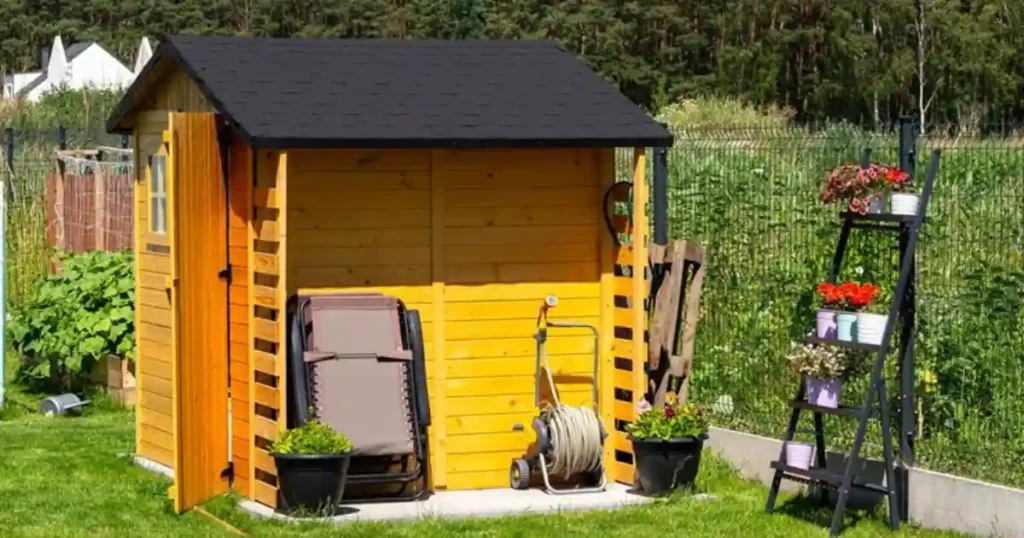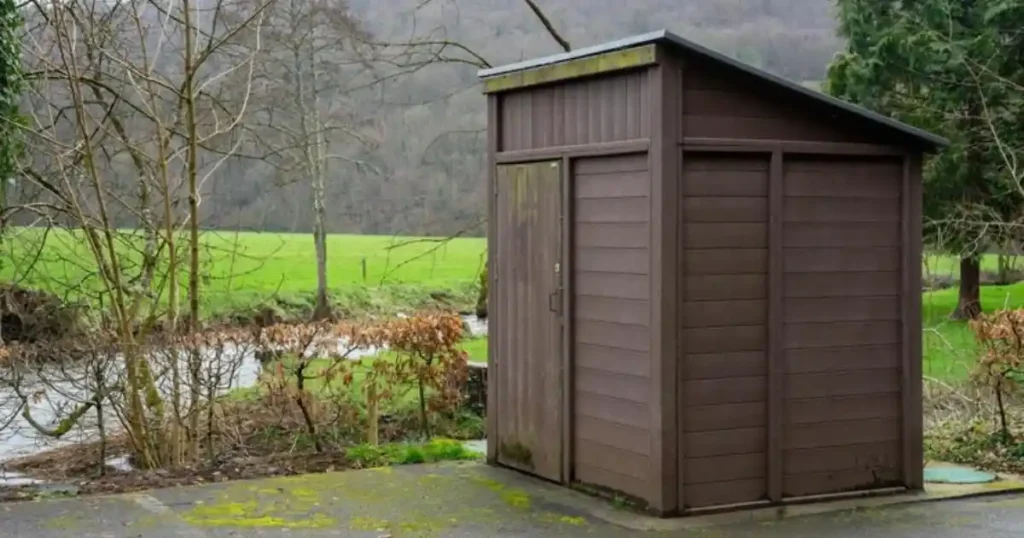A garden shed is a valuable addition to any outdoor space, providing storage for tools, equipment, and even creating a cozy retreat.
However, exposure to rain, snow, and humidity can take a toll on your shed, leading to dampness, rot, and damage to your belongings.
This comprehensive guide will show you how to effectively waterproof garden shed, ensuring it stays dry and in good condition for years to come.
Assessing Your Shed and Gathering Materials

Before you start, it’s important to assess the current condition of your shed and identify any areas that need attention. Check for:
- Leaks: Look for signs of water ingress, such as damp patches, water stains, or dripping water.
- Damaged Roof: Inspect the roof for missing or damaged shingles, cracks, or gaps.
- Window and Door Seals: Examine the seals around windows and doors for any signs of deterioration or gaps.
- Wall Condition: Check the walls for cracks, holes, or signs of rot.
Once you’ve identified the areas that need waterproofing, gather the necessary materials. Here’s a table with some common waterproofing supplies:
| Material | Purpose |
|---|---|
| Roof sealant | Sealing cracks and gaps in the roof |
| Waterproofing membrane | Creating a waterproof barrier on the roof |
| Window and door sealant | Sealing gaps around windows and doors |
| Wood preservative | Protecting wooden components from rot and decay |
| Waterproof paint or stain | Adding a waterproof layer to the shed’s exterior |
| Brushes, rollers, and other application tools | Applying the waterproofing materials |
To Waterproof Garden Shed Roof
The roof is the most important area to waterproof, as it’s the primary point of contact with rain and snow. Here’s a step-by-step guide to waterproof garden shed:
- Clean the Roof: Remove any debris, moss, or algae from the roof surface using a brush or scraper.
- Repair any Damage: Replace any missing or damaged shingles, and fill any cracks or gaps with roof sealant.
- Apply Waterproofing Membrane (Optional): For added protection, consider applying a waterproofing membrane over the entire roof surface.
- Apply Sealant: Apply a generous amount of roof sealant along the edges of the roof, around any vents or chimneys, and at any joints or seams.
Sealing Windows and Doors

Properly sealing windows and doors is crucial to prevent water from entering your shed. Follow these steps:
- Inspect the Seals: Check the existing seals around windows and doors for any signs of damage or deterioration.
- Remove Old Sealant: If the old sealant is cracked or peeling, remove it using a scraper or utility knife.
- Clean the Surfaces: Clean the surfaces around the windows and doors to ensure good adhesion for the new sealant.
- Apply New Sealant: Apply a bead of window and door sealant around the perimeter of each window and door, ensuring a complete seal.
Weatherproofing the Shed Walls
Weatherproofing the walls will further protect your shed from the elements and help to seal it against moisture. Here’s what you can do:
- Apply Wood Preservative: If your shed is made of wood, apply a wood preservative to all exterior surfaces to prevent rot and decay.
- Caulk any Gaps or Cracks: Fill any gaps or cracks in the walls with a suitable exterior caulk.
- Apply Waterproof Paint or Stain: Apply a coat of waterproof paint or stain to the exterior walls to create an additional barrier against moisture.
Additional Tips for Waterproofing Your Shed
- Ensure Proper Ventilation: Good ventilation is essential to prevent condensation and moisture buildup inside the shed. Install vents or leave a small gap beneath the eaves to allow air circulation.
- Maintain Gutters and Downspouts: Keep gutters and downspouts clean and clear to ensure proper drainage of rainwater away from the shed.
- Elevate the Shed: If possible, elevate the shed slightly off the ground using concrete blocks or a timber frame to prevent water from pooling around the base.
Waterproofing a Plastic Shed

Plastic sheds have the advantage of being naturally water-resistant, but they can still benefit from some waterproofing measures. Here are some tips:
- Seal any seams or joints: Use a sealant specifically designed for plastic to seal any gaps or seams in the shed walls or roof.
- Improve ventilation: Ensure adequate ventilation to prevent condensation buildup inside the shed.
- Insulate the shed: Adding insulation to a plastic shed can help regulate temperature and reduce condensation.
Assembling a Plastic Shed
While plastic sheds are generally easier to assemble than wooden sheds, it’s still important to follow the manufacturer’s instructions carefully. Here are some general tips:
- Prepare the base: Ensure the base is level and stable to prevent the shed from warping or shifting.
- Follow the instructions: Assemble the shed panels and components in the correct order as per the instructions.
- Use the provided hardware: Use the screws, bolts, and other hardware provided by the manufacturer to ensure a secure and stable structure.
What is the Best Waterproofing Material for a Garden Shed Roof?

There are several effective materials to waterproof garden shed roofs, including:
- Bitumen-based sealant: This is a common and affordable option that provides good protection against water damage.
- Silicone sealant: This type of sealant is more flexible and durable, making it a good choice for areas prone to movement or expansion.
- Waterproofing membrane: A waterproofing membrane can be applied over the entire roof surface for added protection.
Conclusion
To waterproof garden shed is a worthwhile investment that will protect your belongings and extend the life of your shed.
By following the steps outlined in this guide, you can create a waterproof barrier against the elements and ensure your shed remains a dry and functional space for years to come.
Remember to regularly inspect your shed for any signs of water damage and reapply waterproofing treatments as needed to maintain optimal protection.
FAQs
Some of the frequently inquired questions about ways to water proof garden shed are given as:
How Often Should I Waterproof Garden Shed?
The frequency to waterproof garden shed depends on the shed’s material, climate, and condition. Generally, it’s a good idea to inspect your shed annually and reapply sealant or waterproofing treatments as needed.
Can I Use Regular Paint to Waterproof Garden Shed?
While regular paint offers some protection, it’s not as effective as waterproof paint or stain. Waterproof paint is specifically formulated to resist moisture and prevent water damage.
How Can I Prevent Condensation in My Garden Shed?
Proper ventilation is key to preventing condensation. Install vents, leave a small gap beneath the eaves, and avoid storing damp items in the shed.
What is the Best Way to Waterproof a Wooden Garden Shed?
Waterproofing a wooden shed involves a combination of techniques, including applying wood preservative, sealing gaps and cracks, and painting or staining with a waterproof product.
